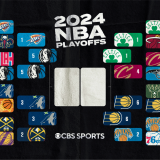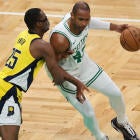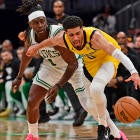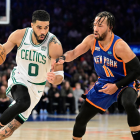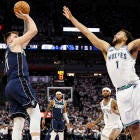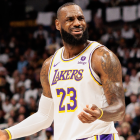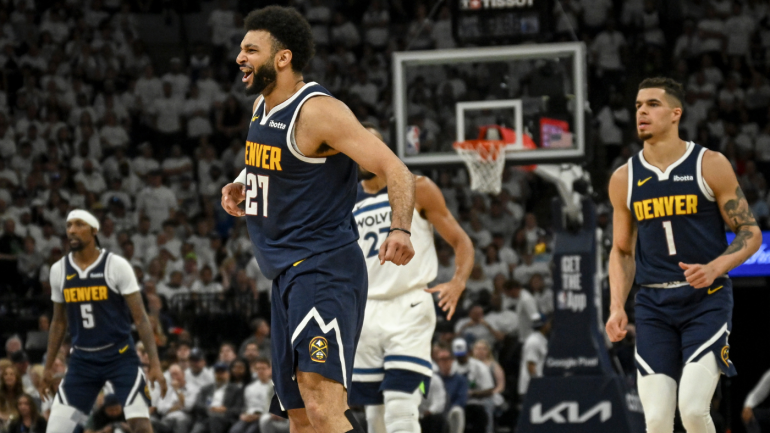
If the Denver Nuggets end up winning this series against the Minnesota Timberwolves -- or, looked at from the opposite angle, if the Timberwolves end up losing this series against the Nuggets. -- we're going to look back at a 35-second sequence to close the first half of Game 4 as the potential difference in what is now a 2-2 affair after Denver evened the series with a 115-107 win on Sunday.
Take note of the eight-point margin, because that's exactly how many points Denver scored during this wild sequence to close the second quarter, and you could argue none of them should've happened.
After trimming a 16-point deficit down to seven on an Anthony Edwards 3-pointer with under a minute to play in the half, Minnesota had all the momentum.
The crowd was popping. Edwards, who wound up with 44 points, was heating up. The Wolves were a stop and score away from going into the locker room in just a two-possession hole.
And it looked like they had gotten the stop when Jamal Murray's pass sailed beyond the reach of Nikola Jokic and into the arms of Karl-Anthony Towns for an apparent turnover. But the whistle blew, and Rudy Gobert was hit for a hold, I guess, on Jokic. You be the judge of this call, but I sure don't see much.
So now the Nuggets get a second crack at the possession, and with the shot clock about to expire, Jokic skips a pass to Kentavious Caldwell-Pope for a 3-pointer to put Denver back up 10.
That sequence alone was huge. That's three points that the Nuggets probably shouldn't have had the opportunity to put on the board. But it was about to get much worse.
On the ensuing possession, which should've been the last of the half as the shot clock was turned off, Edwards drove into a crowd and lost the ball, which led to a run-out dunk for Michael Porter Jr. to put Denver up by 12. And then, well, this happened ...
JAMAL MURRAY FROM BEYOND HALFCOURT.
— NBA (@NBA) May 13, 2024
KEVIN HARLAN IS HYPED.
Nuggets lead at halftime on TNT 🍿🍿🍿 pic.twitter.com/PKjD1bS9CG
"It's inexcusable to have a segment like that where they score eight points in seven seconds or something like that to close the quarter when we had done a good job of chipping back into the game," Timberwolves coach Chris Finch said.
In wasn't quite in seven seconds, but Finch's math is correct. Denver indeed scored eight points -- again, the game's final margin -- in 35 seconds. The Wolves had the lead down to seven with under two minutes to play in the fourth quarter, but they never got closer. That end-of-half sequence held up.
This could have gone a lot of different ways, starting with that phantom foul on Gobert. That was a turnover, plain and simple. Let's say the Wolves go down and score on that possession. Now it's a five- or even four-point game. Instead, the Nuggets retain possession and KCP pushes it to 10.
Huge swing.
But OK, bad calls happen. At the very least, Minnesota has to go into the locker room down no more than 10. It has to take the final shot of the half in that situation. It's basketball 101. Instead, the Wolves went from a 10-point deficit to 15 in six disastrous seconds.
Look, Denver outplayed Minnesota in this game. A 12-2 run at the start of the second quarter with Jokic on the bench was arguably just as important of a stretch. It doesn't feel like this sequence decided the outcome.
But weird stuff happens. The Knicks got outplayed by Philadelphia in Game 2 of their first-round series, but they still won the game on the strength of a crazy end-of-quarter sequence.
I'll tell you this: Had Minnesota come out of the locker room down just seven, let alone four or five, instead of 15, that second half could've gone much differently. This game, and perhaps this series, might well have turned, one way or the other, on that 35-second sequence.











